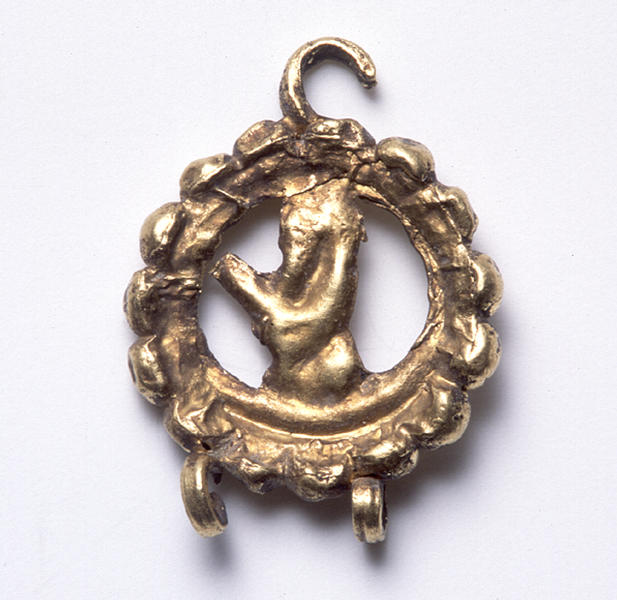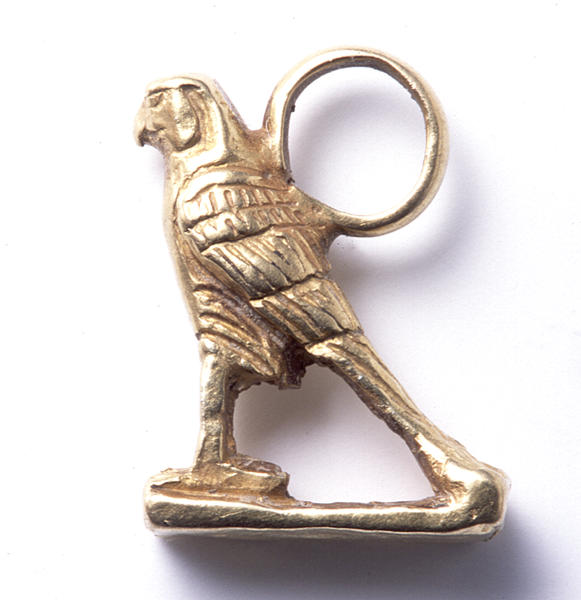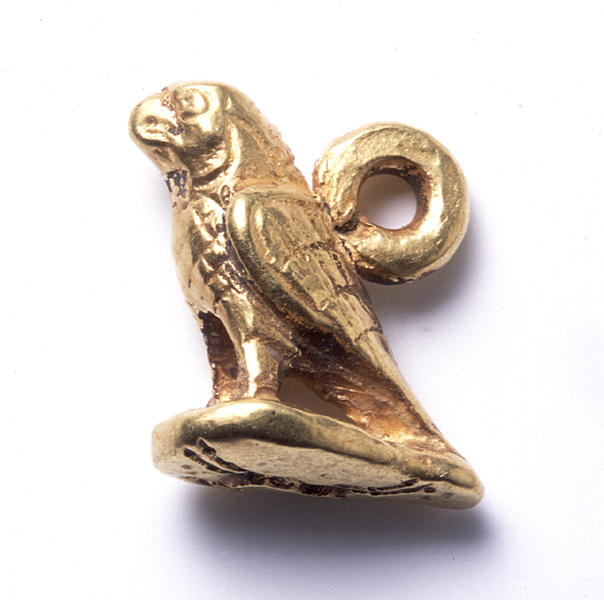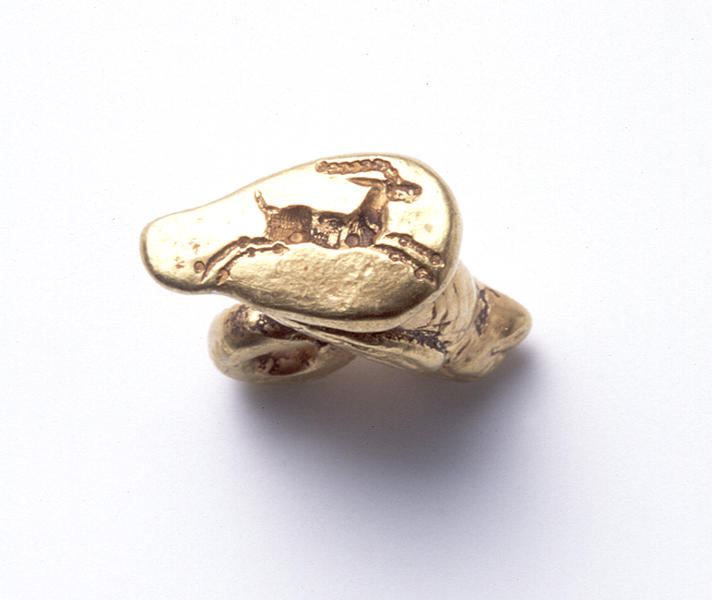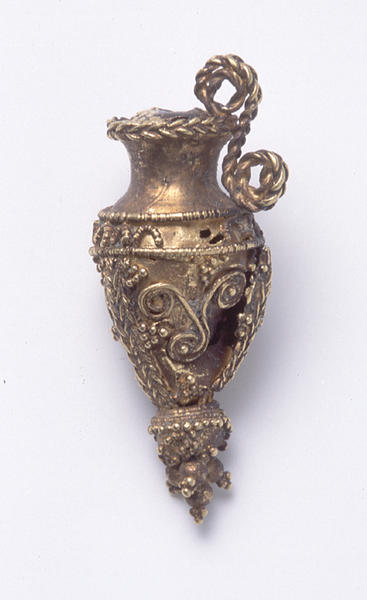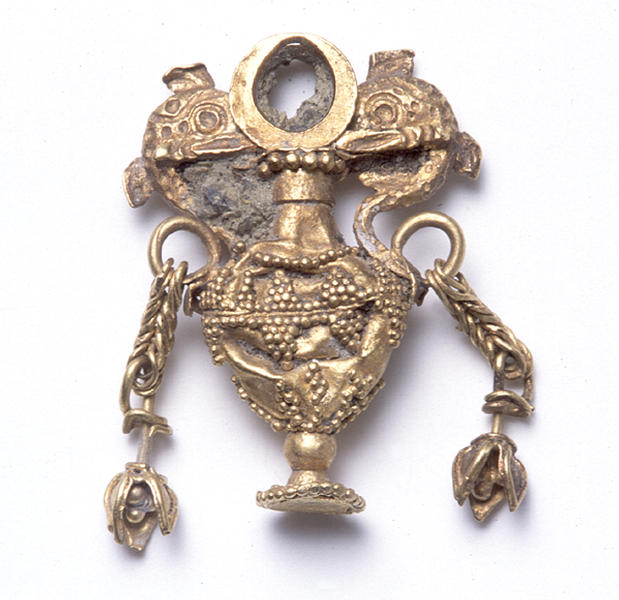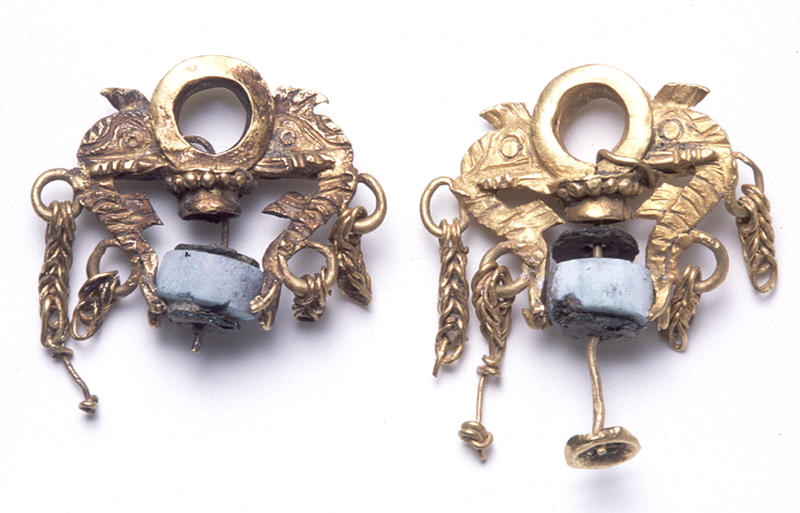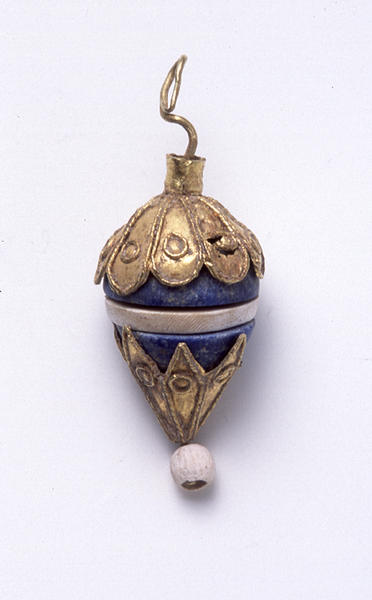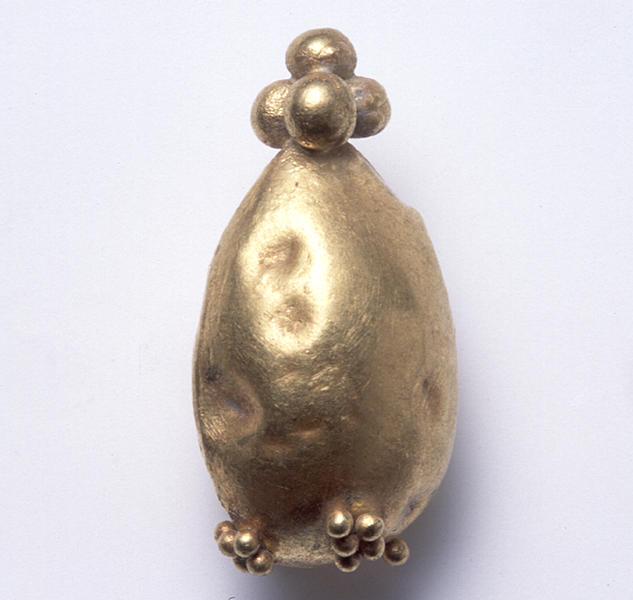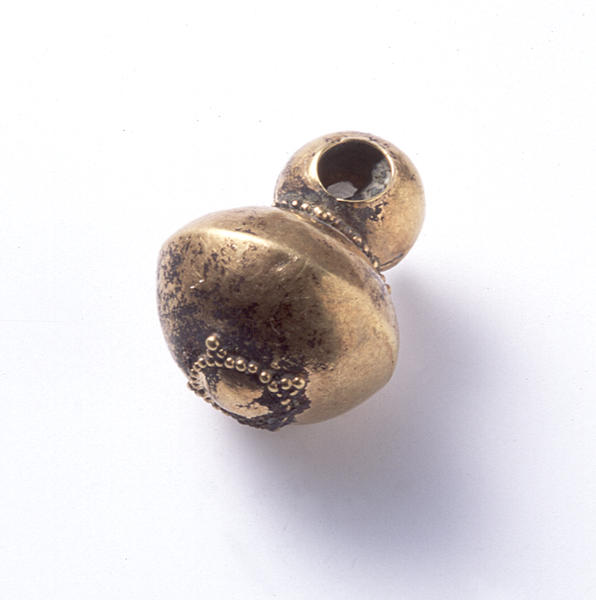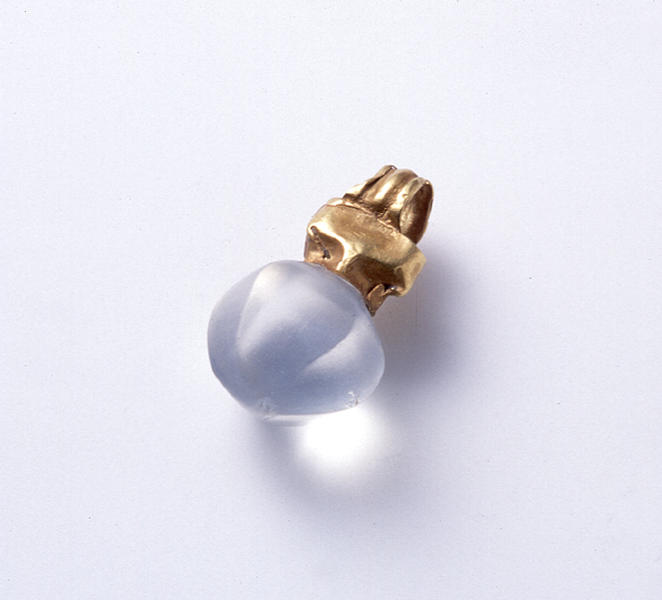ペンダント
- 紀元前4-紀元前2世紀
- 金
解説(古代バクトリア遺宝展)
a:前4世紀 b-k:前3―前2世紀
金、ラピスラズリ、貝殻、水晶
a:高1.9 cm 幅1.4 cm b:高1.6 cm 幅1.3 cm c:高1.5 cm 幅1.3 cm
d:高2.6 cm 幅1.1 cm e:高2.0 cm 幅1.5 cm f:高1.8 cm 幅2.1 cm
g:高2.4 cm 幅2.0 cm h:高2.8 cm 幅1.1 cm i:高2.7 cm 幅1.4 cm
j:高1.9 cm 幅1.6 cm k:高1.6 cm 幅0.9 cm
aは円環の中に、有鬚で冠を被り手を前に捧げる人物の半身を配し、円環の周囲には肉厚の花弁意匠を施している。上部に1個、下部に2個の小環を付けている。この円環に囲まれた人物は、しばしばアフラマズダと同一視されるが、アケメネス朝時代のゾロアスター教でこの絶対神の表現がなされたかは疑問である。むしろこれは神来の王の幸い、恩恵を表すフワルナの表現ではないかと思われる。これはスーサ由来の宝飾品や作品33にも見られるようにアケメネス朝の装身具の重要な意匠となっている。
Bとcは台の上に立つ隼形のペンダントで、背中に環を付けている。Cはその台の底面が走るガゼル意匠の印章になっている。同種のものはアイ・ハヌムからも出土している。
D は金板の打ち出しと金線で水差形のペンダントを作っている。
E、f、gは海の怪物ケトスと花形の垂飾を付けた壺形のペンダントである。Fとgは壺形の胎部は失われているが、その一部と思われる円盤状のトルコ石が残っている。
Hは2つの円錐状のラピスラズリ及び貝殻片で作った円盤で穀粒形の胎部を作り、その上下に金板と金線で花弁装飾を被せ、ペンダントを作っている。
iは金板で打ち出した穀粒形の上下に大きめの細粒を付けている。現在は取り付け部分を失っている。
Jは細粒で装飾した算盤珠形に環を付けている。
Kは面取りをした水晶珠が金の環に付けられている。
Catalogue Entry
a : 4th century B.C. B-k : 3rd‐2nd century B.C.
Gold, lapis-lazuli, shell, crystal
(a)H. 1.9 cm, W. 1.4 cm(b)H. 1.6 cm, W. 1.3 cm
cH. 1.5 cm, W. 1.3 cm(d)H. 2.6 cm, W. 1.1 cm
(e)H. 2.0 cm, W. 1.5 cm(f)H. 1.8 cm, W. 2.1 cm
(g)H. 2.4 cm, W. 2.0 cm(h)H. 2.8 cm, W. 1.1 cm
(i)H. 2.7 cm, W. 1.4 cm(j)H. 1.9 cm, W. 1.6 cm
(k)H. 1.6 cm, W. 0.9 cm
(a) Upper part of a bearded, crowned figure with arms extended forward is shown inside a circular ring. The outer edge of the ring is decorated with a thickly fleshed petal design. One small ring is placed on the top of the unit, with two small rings placed below. The figure enclosed in this ring is frequently identified with Ahura Mazda, but there remains the question of whether or not this god would have been depicted in the Zoroastrian faith of the Achaemenid period. This could be a depiction of Khvarenah showing the divine grace of the king. This is an important motif in Achaemenid period jewelry as seen in the jewelry excavated at Susa and cat. No. 33.
(b), c These bird-shaped pendants are shown standing on platforms. The base of pendant c is a seal showing a running gazelle. This same type of pendant has been excavated at Ai Khanoum.
(d) Beaten gold sheets and gold wire have been used to form a pitcher-shaped pendant.
(e)-(g) Ketos sea monster and flower shaped pendants are attached to these jar-shaped pendants. Pendants f and g are missing the torso sections of their jars, with a disk of turquoise remaining in each as possible sections of the jars.
(h) Lapis lazuli and shell form the torso of this grain-shaped pendant, with flower petal designs in gold sheet and gold wire covering the top and bottom of the pendant.
(i) Large granular decoration has been attached to the top and bottom of a grain-shaped pendant hammered from a sheet of gold. Today the attachment section of the pendant is missing.
(j) An abacus bead shape decorated with granules is attached to a ring.
(k) A faceted crystal is attached to a gold ring.
